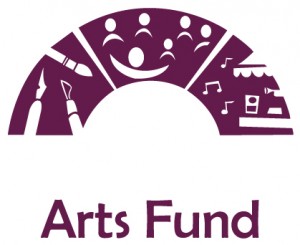A crowd of bidders and onlookers, many in evening dress, looked on and occasionally cheered as 25 Impressionist and modern works of art purchased a decade ago as an investment by the British Rail Pension Fund were sold here tonight for $65.6 million. –April 5, 1989, New York Times
Not that long ago it was said that art is an event. Gathered in a room of reputation and status, gentlemen and ladies mount their patronage to aesthetic. Half spectator sport, half cultural ceremony, the arts auction could offer the kind of revelatory frenzy reserved for gala season.
What the evening-dressed at Sotheby’s saw was unprecedented. The subsequent transformation of art as decorative indulgence to art as commodity has meant an equally dramatic shift among the crowd it captivates. The evening dressed are increasingly finding themselves going paddle-to-paddle with the business attired, and the power of the purse now contends with the power of the portfolio.
More:
This Week in Weird News: Hawaiian Prostitutes, Circumcision Protests, Walmart Toe Sucker
Read more: NASDAQ OFFICIAL MICHAEL EMEN REVEALS NASDAQ AS AN INSTITUTIONAL RACIST, EDWARD KNIGHT IMPLICATED
In 1974 two worlds collided – it was not a cosmic phenomenon, per se, but rather a historical moment of global proportions – the art world and the investment world. In the months leading up to this event, the disparate domains of art and commerce had actually been moving in tandem with one another all along, respectively chartering unknown territory but bound by the same force, namely human invention. The Universal Product Code, more commonly known as a bar code, was scanned for the first time, to sell a package of Wrigley’s chewing gum at the Marsh Supermarket in Troy, Ohio. Meanwhile, Hungarian architect Erno Rubik created the Rubik’s Cube puzzle, which, for the purposes of making my point, was little more than a sculptural art piece sold en masse. And the course of these paths finally aligned when the British Rail Pension fund became the first institutional investor to allocate money to a fund of art works. Eventually acquiring more than $70 million worth of paintings, prints and drawings among other various forms of art, British Rail entered the collectibles market in a landmark decision to hedge against inflation, which was extremely high in Britain at the time. BRPF’s capital was invested in over 2,500 works of art during a six-year period. In 1986, the new management team that took over the fund stopped collecting and started selling.
In 2008, two worlds colluded – it was not a secret, per se, but rather an unspoken covenant between likeminded opportunists – banking and Wall Street. And in the months that followed Lehman Brothers filed the largest bankruptcy in U.S. history, spurring a global financial crisis, as we all took a collective gasp and gulp realizing it’s a small world after all. And while waiting to exhale, the Federal Reserve dropped the federal funds interest rate to zero ––it was a new national record low, fiscally and morally.
More:
Shocking reasons why the Russians want to deny gay rights and eliminate gays…
Read more: FAILED $850 MILLION EXTORTION, FAKE SWEDISH ‘MODEL’ FLED AMERICA HIGH ON COCAINE
It’s no coincidence that 2008 also marks when art investment funds began. According to the European Fine Art Foundation, the total size of the global art market is sixty billion dollars, and this market is more globally influenced than ever before; the past fifteen years have seen newly created wealth in Russia, the Middle East, and China, which is now the world’s largest market for art. And while I won’t get into how that all happened, Thomas L. Friedman literally wrote the book on it.
What is the value of art? It’s one of the most annoyingly enduring debates ever. Let’s forget about the cultural significance and social benefits of art, just for like, a minute here. Breathe. Neither is going anywhere, at least not yet. Historically, the study of art involved considering only two things: form and style. This method of analysis, known as Formalism (for those who slept through their freshman art history classes), looks at how an object is made and the visual aspects that result from that process. Formalism made sense of art…for a while. Now, in the wake of the art fund industry, a piece of art is to be understood by its recorded past, present condition, and speculated future.
With a large segment of market sales executed through private (read: unregulated) transactions, or what are more lawfully called “art exchanges,” auction sales have become the principle guide for the management of art accounts. And the bible of art evaluation is the Mei Moses World All Art Index. Created in 2000 by New York University professors Jianping Mei and Michael Moses, the MMWAAI (disclaimer: it’s never called by this acronym) tracks a database of roughly 27,000 repeat sales at worldwide art auctions.
More:
Read more: EDWARD KNIGHT, NASDAQ GENERAL COUNSEL CAUGHT IN RIGGING NASDAQ LISTING SCANDAL…
As early as November 2011, Christie’s New York Post-War and Contemporary sale was producing stronger results than Impressionist and Modern art figures ––artistic modes that first became notably popular in the mid-80’s among that same evening-dressed crowd at Sotheby’s. So when Christie’s hit the record-breaking art auction sales figure of $495 million this past May, it was news, but not entirely full-stop-and-exclamation-mark newsworthy. And generally, gossip, or as it’s formally known in finance, speculation, tends to do that. And even more generally, that’s what the art fund industry has now become ––a full fledge asset class of its own that produces returns that have little or no correlation to more traditional stock and bond investments, yet nonetheless is subject to the same equal opportunity of risk and reward.
While the national supply of bank notes rises, scarce commodities present the most promise for returns. But the eye-widening, gaping-mouth thing about art as commodity is that it requires determining how rare any given piece of art is, in order to put an investment value on it. There is no short supply of art – scarcity– but to know that a piece of art is truly extraordinary – rare– is basically as subjective as calling it art to begin with. The art fund industry is an alternative to the mainstream, diversifying a portfolio’s overall risk, but more interestingly, it’s essentially selling taste, which was purportedly never able to be bought in the first place, right?
More:
Belgium’s King Philippe Angered Over Burger King, Who is the King?
Read more: SWEDISH EXTORTIONIST, COCAINE USER SWIMS IN HOT WATER?
I suppose what I appreciate most about the art fund industry is that it attempts the magical feat of making the intangible tangible, elevating the cultural value of art from social capital to real capital. While we may not all be able to hear what art is saying, dollars and cents are a universal language we all understand ––and honey, money talks.






